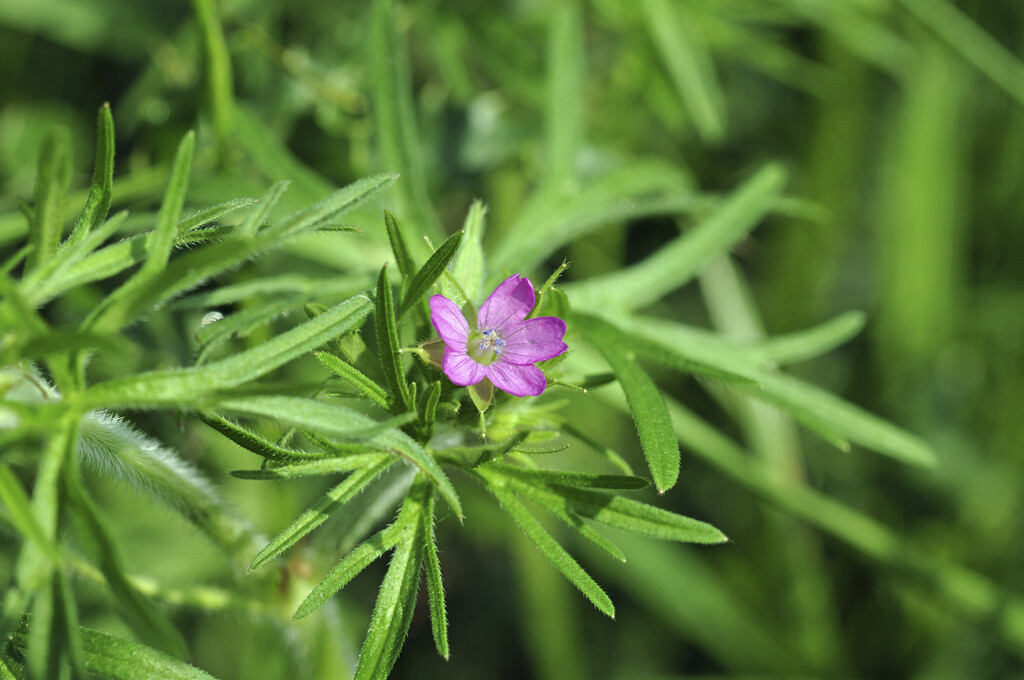Geranium dissectum
cut-leaved cranesbill
A creeping annual with deeply-lobed, hairy green foliage. Small, pretty purple-pink flowers on short stems, with slightly notched petals and hairy sepals, appear sparcely from May through to August. Mainly found on farmland where soil has recently been disturbed, hedgebanks or in grassland

Size
Ultimate height
0.1–0.5 metresTime to ultimate height
1 yearUltimate spread
0.1–0.5 metresGrowing conditions
Moisture
Moist but well–drained, Well–drainedpH
Acid, Alkaline, NeutralColour & scent
| Stem | Flower | Foliage | Fruit | |
| Spring | Pink Purple | Green | ||
|---|---|---|---|---|
| Summer | Pink Purple | Green | ||
| Autumn | Green | |||
| Winter |
Position
- Full sun
- Partial shade
Aspect
East–facing or South–facing or West–facing
Exposure
Exposed or Sheltered Hardiness
H7Botanical details
- Family
- Geraniaceae
- Native to GB / Ireland
- Yes
- Foliage
- Deciduous
- Habit
- Spreading branched
- Genus
Geranium can be annuals, biennials and perennials, herbaceous or evergreen, with rounded, usually palmately lobed or divided leaves, and lax inflorescences of rounded, 5-petalled flowers
- Name status
Correct
How to grow
Cultivation
Grow in moderately fertile, well-drained soil in partial shade
Propagation
Propagate by division in spring or propagate by basal cuttings in early to mid spring and root with bottom heat
Suggested planting locations and garden types
- City and courtyard gardens
- Cottage and informal garden
- Patio and container plants
- Wildlife gardens
- Low Maintenance
- Flower borders and beds
- Ground cover
- Wall side borders
Pruning
No pruning required. Remove flowered stems and old leaves to encourage the production of fresh leaves and flowers
Pests
May be susceptible to vine weevil, capsid bug and geranium sawfly
Diseases
May be susceptible to downy mildew and powdery mildews
Get involved
The Royal Horticultural Society is the UK’s leading gardening charity. We aim to enrich everyone’s life through plants, and make the UK a greener and more beautiful place.